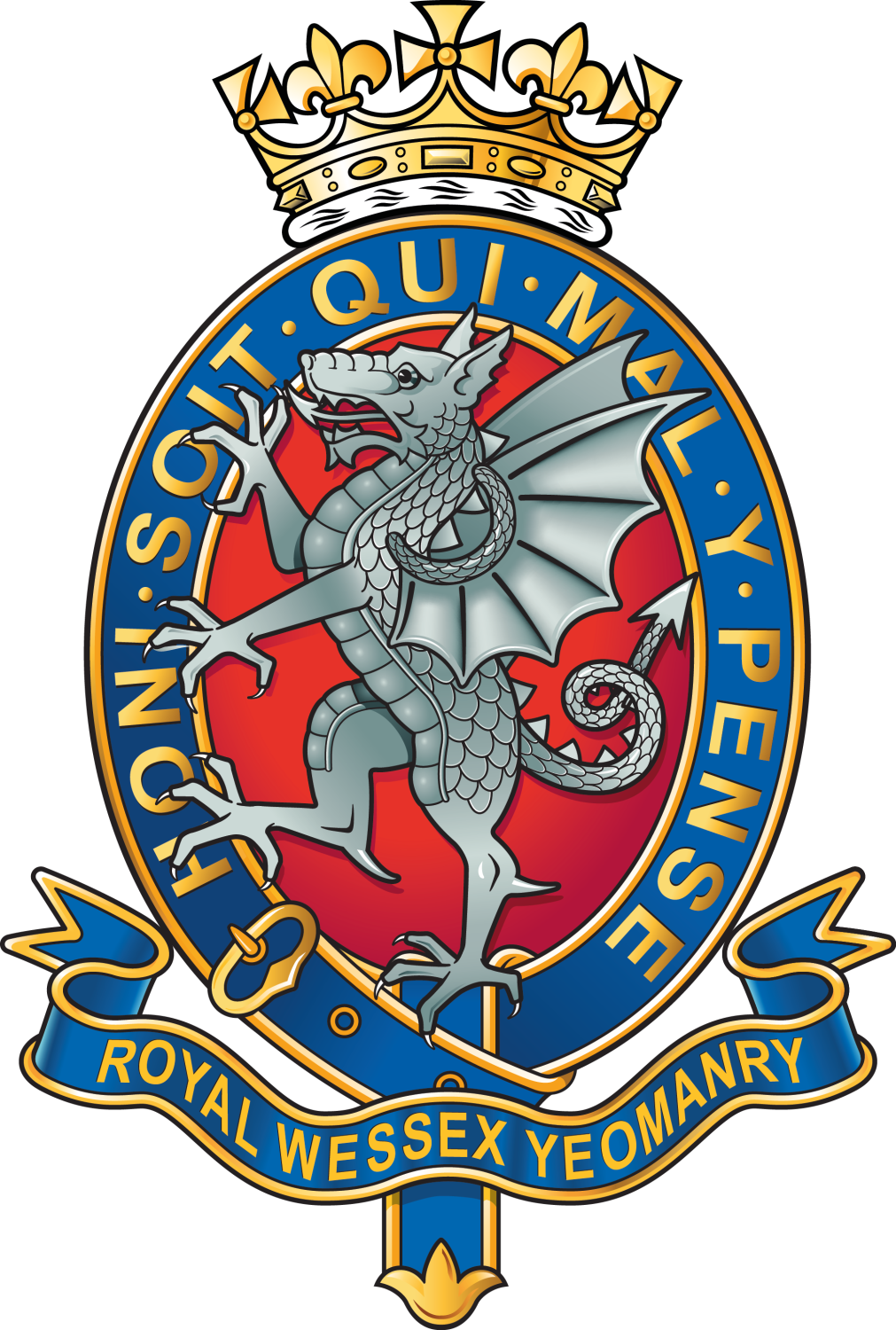A Short History of the Dorset Yeomanry
The history of the Yeomanry of Dorset begins with the formation of a mounted volunteer corps of ‘Gentry and
Tenant Farmers’ of the County in 1784. The Dorset Volunteer Rangers were first commanded by Lord Milton of
Milton Abbas. Once the threat of the French Revolutionary Wars receded in 1802 the regiment disbanded later
reformed as the Dorset Volunteer Cavalry when Napoleon Bonaparte threatened invasion in 1804. Napoleon’s
abdication in 1814 saw the Regiment stood down again. Independent troops were retained by some landowners
and were used on occasions to supress civil unrest in the County. The Regiment was re-raised in 1830 largely for this
purpose, there being no Dorset Constabulary until 1855. In 1843 the Yeomanry of Dorset acquired the title of The
Queen’s Own Regiment of Yeomanry Cavalry after providing an escort to the Queen Dowager, Adelaide on an
official visit to Dorset in that year.
The QODY participated fully in the activities of the Yeomanry in the late 19th Century winning the Lloyd-Lindsay Cup,
a national military skills competition on no less than four occasions. The Second Boer War, 1899-1902 saw the first
call for the Yeomanry to serve overseas. Dorset Yeoman responded forming the 26th (Dorset) Company of the 7th
Battalion, Imperial Yeomanry serving with credit sadly losing 10 Yeomen whilst doing so.
The QODY was, with all 55 Yeomanry Regiments drawn into the Territorial Force on its creation in 1908 and placed in
the 1 st South Western Brigade at the outbreak of the Great War in August 1914. The QODY were embodied very
quickly and efficiently with both men and horses. The QODY were deployed to Norfolk as part of the 2 nd South
Midland Brigade with whom they would fight for much of the War. In April 1915 the Regiment was deployed to
Egypt on mounted duties until August 17th/18th 1915 when the Brigade, including 377 men of the QODY landed at
Suvla Bay in Gallipoli to fight as infantry. On August 21st at Scimitar Hill 45 Yeomen of Dorset were posted Killed or
Missing in the worst single day of the War for the QODY. At the end of October 1915, the QODY returned to Egypt
and their horses to the mounted role for the remainder of the Great War. The Regiment’s charge at Agagia on 26th
February 1916 is still A Squadron’s ‘special day’ also commemorated by Lady Butler whose painting can be seen at The
Keep in Dorchester.
The Regiment again famously charged at El Mughar with the other Regiments of their Brigade in November 1917 and
were still serving as mounted troops at the Armistice of 1918 unlike many other Yeomanry Regiments who had been
converted to infantry during the War. Following a quiet and unassuming homecoming the Regiment returned to
Dorset less 208 of their number who fell during the Great War. Their distinguished service as mounted troops did
not save the QODY in the huge post-war reorganisation and the Regiment converted to Field Artillery in 1922.
It was as artillery that the Yeomen of Dorset served during the Second World War. 141st (QODY) Field Regiment RA
TA had the peculiar distinction of never leaving home shores. The same could not be said of the 94th (Dorset and
Hants) Field Regiment RA TA who supported 43rd (Wessex) Division throughout the North West European Campaign
from June 1944 to the defeat of Nazi Germany. Individual Yeomen were deployed to the Far East but not as a
regiment. The QODY remained as artillery until 1967 when they were merged into various local TA/Militia units until
little remained of the old Regiment and its history. Until 1997.
In 1997 the Dorset Yeomanry was raised as the Army’s specialised Armoured Delivery Regiment. Although having no
direct lineage to the old QODY the new Yeomen of Dorset were permitted to ‘realigned’ themselves with the history
of Yeomanry in Dorset, something the new Regiment did with passion. A (DY) Squadron, RWxY maintains those traditions
to this day.
